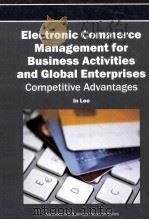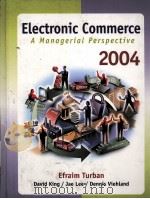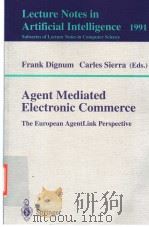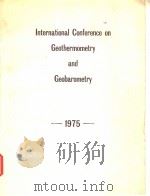《ELECTRONIC COMMERCE AND LNTERNATIONAL TAXATION》
| 作者 | RICHARD L.DOERNBERG,LUC HINNEK 编者 |
|---|---|
| 出版 | KLUWER LAW INTERNATLONAL |
| 参考页数 | 380 |
| 出版时间 | 1999(求助前请核对) 目录预览 |
| ISBN号 | 9041110534 — 求助条款 |
| PDF编号 | 813681368(仅供预览,未存储实际文件) |
| 求助格式 | 扫描PDF(若分多册发行,每次仅能受理1册) |

1.INTRODUCTION1
2.THE TRADITIONAL INTERNATIONAL TAX RULES11
2.1. DIRECT (INCOME) TAXATION: JURISDICTION TO TAX AND THE EXERCISE THEREOF11
2.1.1.Jurisdictional nexus11
2.1.2.Domiciliary jurisdiction12
2.1.2.1.Citizenship12
2.1.2.2.Domicile and residence12
2.1.2.3.Incorporation13
2.1.2.4.Effective management14
2.1.3.Sourcejurisdiction14
2.1.3.1.In general14
2.1.3.2.Source rule for business income15
2.1.3.3.Source rule for capital income16
2.1.4.Double taxation and causes thereof17
2.1.4.1.Overlapping jurisdictional bases17
2.1.4.2.Divergence in tax characterization of the facts18
2.1.4.3.Divergence in personal attribution of the income19
2.1.5.Relief of double taxation provided through tax treaties19
2.1.5.1.Classification and assignment of income19
2.1.5.2.Resolution of overlapping claims of domiciliary jurisdiction20
2.1.5.3.Uniform classification of facts20
2.2. VAT AND SALES TAX21
2.2.1.General nature of Community VAT24
2.2.2.VAT harmonization legislation25
2.2.3.Systems of cross border trade taxation26
2.2.3.1.Original system (Sixth Directive)26
2.2.3.2.Transitional (1993) system27
2.2.3.3.Towards a definitive system (1999?)27
2.2.4. Individual VAT rules and concepts33
2.2.4.1.Scope of VAT-able transactions33
2.2.4.2.Place of taxable transactions34
2.2.4.2.1.Supply of goods34
2.2.4.2.2.Supply of services (Article 9)35
2.2.5.Rates and exemptions39
2.2.5.1.Rates39
2.2.5.2.Exemptions40
2.2.6. Deduction and refund41
2.2.7.VAT accounting and administration41
2.2.7.1.Person liable to pay the tax41
2.2.7.2.Identification and designation of tax representative42
2.2.7.3.Reverse charge42
2.2.7.4.Administrative obligations42
2.2.8. Overview of VAT applications to international transactions43
3.TECHNOLOGICAL CHANGES AND ELECTRONIC COMMERCE45
3.1. BACKGROUND45
3.2. DESCRIPTION OF THE INTERNET, INFORMATION SUPERHIGHWAY AND WORLD WIDE WEB46
3.3. DIGITIZATION47
3.4. DEVELOPMENT OF THE PHYSICAL NETWORK INFRASTRUCTURE52
3.5. LOGICAL NETWORK INFRASTRUCTURE58
3.6. INTERNET OPERATION61
3.6.1. Protocols62
3.6.1.1.High layer protocols63
3.6.1.2.Low layer protocols64
3.6.2. Routers and switches65
3.6.3.Client/server architecture66
3.6.4. Internet applications67
3.6.4.1.In general67
3.6.4.2.World wide web68
3.6.4.3.Other internettools71
3.6.5. Emerging internet tools72
3.7. ELECTRONIC COMMERCE72
3.7.1.Implementation73
3.7.1.1.Customer-to-business electronic commerce73
3.7.1.1.1.Shopping73
3.7.1.1.1.1.Pre-purchase information74
3.7.1.1.1.2.Purchase75
3.7.1.1.1.3.Post-purchase activities76
3.7.1.1.2.Entertainment76
3.7.1.1.3.Travel77
3.7.1.1.4.Health care77
3.7.1.1.5.Personal finance and home banking78
3.7.1.2.Business-to-business electronic commerce78
3.7.1.2.1.Sample EDI applications81
3.7.1.2.1.1.International trade81
3.7.1.2.1.2.Financial EDI81
3.7.1.2.1.3.Health care and insurance EDI82
3.7.1.2.1.4.Manufacturing/retail EDI83
3.7.1.2.2.EDI implementation84
3.7.1.2.2.1.EDI software84
3.7.1.2.2.2.Value-Added Networks (VAN’s)85
3.7.1.3. Intra-business electronic commerce85
3.7.1.3.1.Telecommuting87
3.7.1.3.2.Video conferencing87
3.7.1.3.3.Virtual corporation88
3.7.2.Intranets89
3.7.3.Software agents89
3.7.3.1.Characteristics and properties89
3.7.3.2.Technology91
3.7.4.Payment systems92
3.7.5.Security issues96
4.APPLYING CURRENT INTERNATIONAL TAX RULES TO ELECTRONIC COMMERCE103
4.1. GENERAL PRINCIPLES104
4.1.1.Blurring of geographical categories104
4.1.2.Blurring of income categories105
4.2. INCOME TAX105
4.2.1.Application of traditional source rules to electronic commerce106
4.2.1.1.Electronic commerce hypothetical107
4.2.1.2.Business profits109
4.2.1.2.1.Problems presented109
4.2.1.2.1.1.Where is income generated109
4.2.1.2.1.2.What costs are attributable to includible income113
4.2.1.2.1.3.Enforcement concerns113
4.2.1.2.2.National law115
4.2.1.2.3.Treaty law133
4.2.1.2.3.1.Permanent establishment133
4.2.1.2.3.1.1.Fixed place of business133
4.2.1.2.3.1.2.Agency145
4.2.1.2.3.1.2.1.Personal agents148
4.2.1.2.3.1.2.2.Software agents149
4.2.1.2.3.2.“Attributable to150
4.2.1.3.Independent services152
4.2.1.3.1.Problems presented154
4.2.1.3.1.1.What are services154
4.2.1.3.1.2.Where are services rendered157
4.2.1.3.2.National law159
4.2.1.3.3.Treaty law164
4.2.1.4.Dependent services166
4.2.1.4.1.Problems presented166
4.2.1.4.2.National law169
4.2.1.4.3.Treaty law170
4.2.1.5.Capital income173
4.2.1.5.1.Dividends and interest174
4.2.1.5.2.Royalties174
4.2.1.5.2.1.National law175
4.2.1.5.2.2.Treaty law192
4.2.2.Application of traditional residence rules in the context of electronic commerce198
4.2.2.1.Problems presented198
4.2.2.2.National law199
4.2.2.3. Treaty law201
4.2.3.Transfer pricing202
4.2.4.Controlled foreign corporations213
4.2.4.1.Problems presented222
4.2.4.2.National law224
4.2.4.3. Treaty law228
4.3. VAT AND SALESTAXES228
4.3.1.The general challenges of electronic commerce and telecommunications services to VAT228
4.3.1.1.Systems of indirect taxation228
4.3.1.2.Direct and indirect electronic commerce and telecommunications services229
4.3.1.3. Official VAT Working Groups230
4.3.2.Hypothetical case233
4.3.3. Telecommunications services235
4.3.3.1.Need of specific regulation235
4.3.3.2.Public and private telecommunications operators235
4.3.3.3. Place of supply237
4.3.3.4.Definition of telecommunications services241
4.3.3.5.The Community VAT experience with telecommunications services242
4.3.4. Electronic Commerce245
4.3.4.1.Range of internet activities and VAT distinctions245
4.3.4.2.Characterization of a service246
4.3.4.2.1.Supply of goods or of services?246
4.3.4.2.2.Categorization of composite supplies (goods and services)250
4.3.4.2.3.Categorization of services according to type of service252
4.3.4.3.Determination of taxable charge of a single composite supply254
4.3.4.4.Problems of defining the place of supply of services255
4.3.4.4.1.Place of business and of fixed establishment255
4.3.4.4.2. Effective use and enjoyment of the services265
4.3.4.5.Overview of VAT applications to electronic commerce and telecommunication services268
4.3.4.6.Regulatory administrative framework and inter-administrative cooperation271
4.3.4.7.Evaluating the application of EC VAT rules to electronic commerce274
4.3.5.Other general consumption tax systems278
4.3.5.1.Other VAT systems278
4.3.5.1.1.Switzerland278
4.3.5.1.2.Israel280
4.3.5.1.3. Colombia280
4.3.5.2.Non-VAT type consumption tax systems281
4.3.5.2.1. Canadian GST281
4.3.5.2.2.US state sales and use tax282
5.CONCLUSIONS AND POLICY APPROACHES297
5.1.INCOM E TAX302
5.1.1.Source-based versus residence-based taxation — a new balancing of taxing authority302
5.1.1.1. Taxation based on source302
5.1.1.1.1.Status quo302
5.1.1.1.2.Enhanced residence-based taxation303
5.1.1.1.3.Enhanced source state taxation306
5.1.1.1.4.Adapting the permanent establishment concept309
5.1.1.1.5.Increased reliance on source state withholding315
5.1.1.1.6.Unitary taxation323
5.1.1.1.7.Transactional taxes328
5.1.1.1.8.Domestic tax considerations330
5.1.1.2.Taxation based on residence331
5.1.1.2.1. Status quo332
5.1.1.2.2.Company residence based on other criteria332
5.1.1.2.3.Form ulary approach334
5.1.1.2.4.Full integration334
5.1.2.Categorization of income335
5.1.2.1.Categories of income335
5.1.2.2.Consistent source rules336
5.1.3.Policies dealing with abuse of jurisdictional rules and disappearing taxpayers338
5.1.4.Administration341
5.2. VAT AND SALES TAXES342
5.2.1.Objectives and official positions342
5.2.2.VAT policy approaches345
5.2.2.1.VAT type approach to general consumption taxation345
5.2.2.2.Conservative VAT policy approach346
5.2.2.3.Origin-based VAT application346
5.2.2.4.Consumption-based VAT application347
5.2.2.5.Consolidating the safety nets348
5.2.2.6.Mechanisms for ensuring VAT accountability and collection350
5.2.2.7.Practical business challenges of electronic commerce352
5.2.2.8.Consistent and neutral characterization of electronic transactions353
5.2.2.9.International cooperation and consensus355
5.2.2.10. VAT-moratorium357
5.2.2.11. VAT-free zone357
5.2.2.12. No new taxes359
5.3.ALTERNATIVE TAX FORMULATIONS359
5.3.1. Bit Tax360
5.3.2. Transaction Tax362
5.3.3. Telecommunications and PC or other Internet hardware taxes362
5.4.INSTITUTIONS363
PRECIS369
PRESENT SITUATION369
Permanent establishment concept369
Taxation of business profits370
VAT371
Conflict between residence and source country taxation372
MODIFICATIONS SUGGESTED375
Recommended policies375
Introduction of new taxes378
Bit tax378
Transaction tax378
Consumption tax379
Withholding tax379
CONCLUDING REMARKS379
1999《ELECTRONIC COMMERCE AND LNTERNATIONAL TAXATION》由于是年代较久的资料都绝版了,几乎不可能购买到实物。如果大家为了学习确实需要,可向博主求助其电子版PDF文件(由RICHARD L.DOERNBERG,LUC HINNEK 1999 KLUWER LAW INTERNATLONAL 出版的版本) 。对合法合规的求助,我会当即受理并将下载地址发送给你。
高度相关资料
-
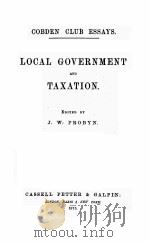
- LOCAL GOVERNMENT AND TAXATION
- 1875 CASSELL PETTER AND GALPIN
-

- NATIONAL LAWS AND INTERNATIONAL COMMERCE
- 1982 ROUTLEDGE & KEGAN PAUL
-

- TAXATION AND THE DEFICIT ECONOMY
- 1986 PACIFIC RESEARCH INSTITUTE FOR PUBLIC POLICY
-

- DEVEIOPMENT AND PRINCIPLES OF LNTERNATIONAL HUMANITARIAN LAW
- 1985 MARTINUS NIJHOFF PUBLISHERS
-
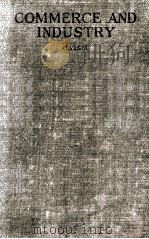
- COMMERCE AND INDUSTRY REVISED EDITION
- 1923 NEW YORK HENRY HOLT AND COMPANY
-
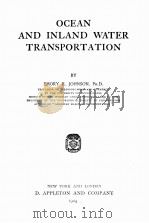
- OCEAN AND INLAND WATER TRANSPORTATION
- 1924 D. APPLETON AND COMPANY
-

- COMMERCE AND INDUSTRY
- 1916 HENRY HOLT AND COMPANY
-

- COMMERCE AND SOCIETY
- 1936 OXFORD AT THE CLARENDON PRESS
提示:百度云已更名为百度网盘(百度盘),天翼云盘、微盘下载地址……暂未提供。➥ PDF文字可复制化或转WORD
